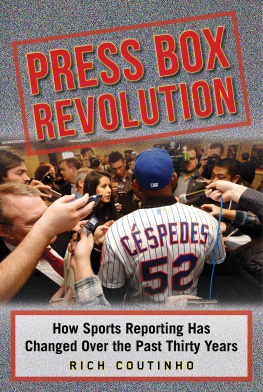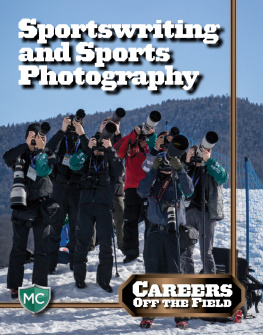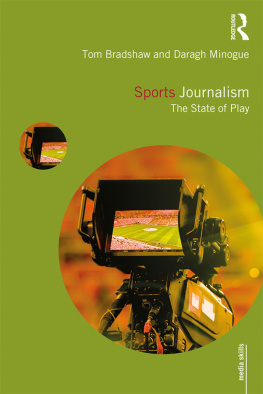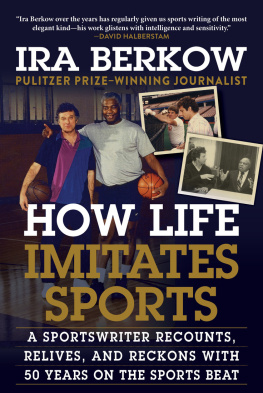Copyright 2017 by Rich Coutinho
All rights reserved. No part of this book may be reproduced in any manner without the express written consent of the publisher, except in the case of brief excerpts in critical reviews or articles. All inquiries should be addressed to Sports Publishing, 307 West 36th Street, 11th Floor, New York, NY 10018.
Sports Publishing books may be purchased in bulk at special discounts for sales promotion, corporate gifts, fund-raising, or educational purposes. Special editions can also be created to specifications. For details, contact the Special Sales Department, Sports Publishing, 307 West 36th Street, 11th Floor, New York, NY 10018 or .
Sports Publishing is a registered trademark of Skyhorse Publishing, Inc., a Delaware corporation.
Visit our website at www.sportspubbooks.com.
10 9 8 7 6 5 4 3 2 1
Library of Congress Cataloging-in-Publication Data is available on file.
Cover design by Tom Lau
Cover photo courtesy of AP Images
ISBN: 978-1-61321-985-0
Ebook ISBN: 978-1-61321-986-7
Printed in the United States of America
This book is dedicated to my mom and dad, who both helped form the passion for sports that has remained in my soul for last half a century. Mom passed in 2004 but she is always with me and my dad is a constant reminder to me that hard work can bring wonderful things to your life.
I would also like to dedicate this book to the memory of Shannon Dalton Forde, the Mets media relations professional that left this world far too soon but taught us all to always love and care for people first and only then worry about yourself.
CONTENTS
Introduction
S PORTS REPORTING HAS TAKEN SO many twists and turns in the past thirty years and my aim in Press Box Revolution is to take you on a journey exploring that history and also tell you things youve never heard before, helping you to understand the changing landscape of the sports media.
Press boxes have always been filled with interesting personalities and you will quickly learn from reading this book that far more egos exist in those press boxes than in the clubhouses. So many media members are so jealous of the money the players make, they feel they have the right to criticize every misstep the athlete takes in the course of a season. This book will explore how trite and immature those actions are and how it affects the relationship the media has with these players.
I will also address the many social issues that affect sports reporting whether it is racist tendencies, how women were treated when they first entered the locker rooms, or how the use of drugs was covered differently in the 80s when it was just recreational as opposed to its vocational use a decade later.
Technology has evolved in a multitude of ways since the 1980s, and I will take you through that trip that began with cassette recorders and no Internet to what we have todaysmart phones, instant messaging, and multi-tasking so the fans get the inside news as quickly as possible. Speed sometimes becomes more important than accuracy and I will address that.
Social media and the Internet have drastically changed the way fans get their sports news and I will examine how the print media botched the use of both, which is leading to its demise.
I will briefly take you through the early stages of my life where I was exposed to the love of sports but also saw racism at an early age and fighting it has become such a big part of my adult life. Seeing it in the media when I started in the industry shocked me at first but my childhood experiences helped me deal with it in the best possible fashion.
I will recall many individual events from the past thirty years and I will explore those times taking you right into the press boxes and corners of the clubhouse youve never seen. The crutches that reporters use such as analytics will be addressed as well as how the media sometimes sounds like voices in an echo chamber, never really using their minds to analyze issuesthey merely parrot each others viewpoints.
Two huge issues that have totally changed the way sports are reported will also be discussedfantasy sports and teams and leagues owning sports networks rather than corporations. This has affected the objectivity for the most part and also created the fans notion that winning a fantasy league is equal to winning a real championship. This manifests itself in social media every single day.
There are certain athletes that I have enjoyed covering over the past thirty years and we will talk about them but I will also broach the sensitive subject of how racism manifested itself in the way players like Darryl Strawberry and Dave Winfield were covered by, quite frankly, a predominantly white male media group . Diversity began to appear in the clubhouses and I will share with you how much that diversity made a huge positive difference even though many of these new media members were treated disrespectfully by the veteran media.
We will also show how the era of Los Mets was covered in a very unprofessional manner and how two big namesBobby Valentine and Rex Ryanwere disrespected on a number of levels when they led New York teams because the media had preconceived notions they refused to abandon.
The mid 80s Mets will be recalled in an honest fashion as the team that changed how sports would be covered because from that time on reporting on the game itself would not be enoughthe players personalities dictated coverage. The 1980s was a live for the moment decade and that team fit that concept like a glove. But they also came to the view of public when the biggest change occurred in our businesssports talk radio.
Fans would now get a chance to talk about their teams on call-in shows and the game experience now included pre- and postgame shows. This transformed the three-hour experience of watching a game into a five-hour visit complete with hearing the voices of your favorite players or the ones you hated because they lost the game for the team you lived and died with every single day.
These all-sports stations also killed network radio and I will take you through the last few years of the Howard Cosell era at ABC Radio which symbolized the transfer of sports on network radio, to specialized all-sports radio. This not only destroyed the networks but created sports revenue sources that liquidated the advertisers from the daily newspapers sales portfolio and at the same time, dispelled the notion that having a classic voice was necessary to be a sportscasting superstar. WFAN became the standard for which all-sports stations would be compared and I will take you through that evolution complete with how they almost did not make the grade in their early years.
So sit back and get in the sports reporting time tunnel as I share my experiences and examine how covering sports has evolved over the past three decades.
Rich Coutinho
January 2017
CHAPTER 1
The Making of a Sports Reporter
W HEN YOU HAVE AMASSED THREE decades of sports reporting in New York, it begs the question: How did you get started?
Life was pretty simple for me as a youngster growing up in the Bronx in the late 60s and early 70s. It was all about going to school, hanging out with your friends, and visiting family. I grew up in the Northeast Bronx, which was Yankees country, but being a contrary kid, I grew up a Mets fan. In those days, the four athletes everybody talked about were Tom Seaver, Walt Frazier, Joe Namath, and Muhammad Ali, and quite honestly, I loved that quartet very much.
On my block, most agreed with the first three but could not understand why I liked Ali so much. You have to remember I lived in a white, Catholic neighborhood in the midst of changing. I firmly believe my education taught me that this was OK and cultural diffusion would actually benefit us. However, there were members of both my family and my friends that could not understand my stance, especially when I tell you a story that shaped my life.








